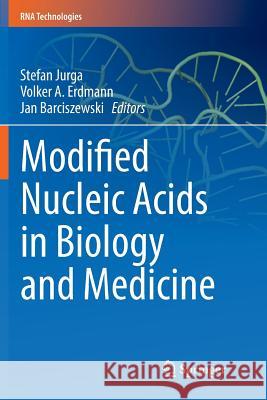Modified Nucleic Acids in Biology and Medicine » książka
topmenu
Modified Nucleic Acids in Biology and Medicine
ISBN-13: 9783319816937 / Angielski / Miękka / 2018 / 453 str.
Kategorie BISAC:
Wydawca:
Springer
Seria wydawnicza:
Język:
Angielski
ISBN-13:
9783319816937
Rok wydania:
2018
Wydanie:
Softcover Repri
Ilość stron:
453
Waga:
0.64 kg
Wymiary:
23.39 x 15.6 x 2.39
Oprawa:
Miękka
Wolumenów:
01
Dodatkowe informacje:
Wydanie ilustrowane











